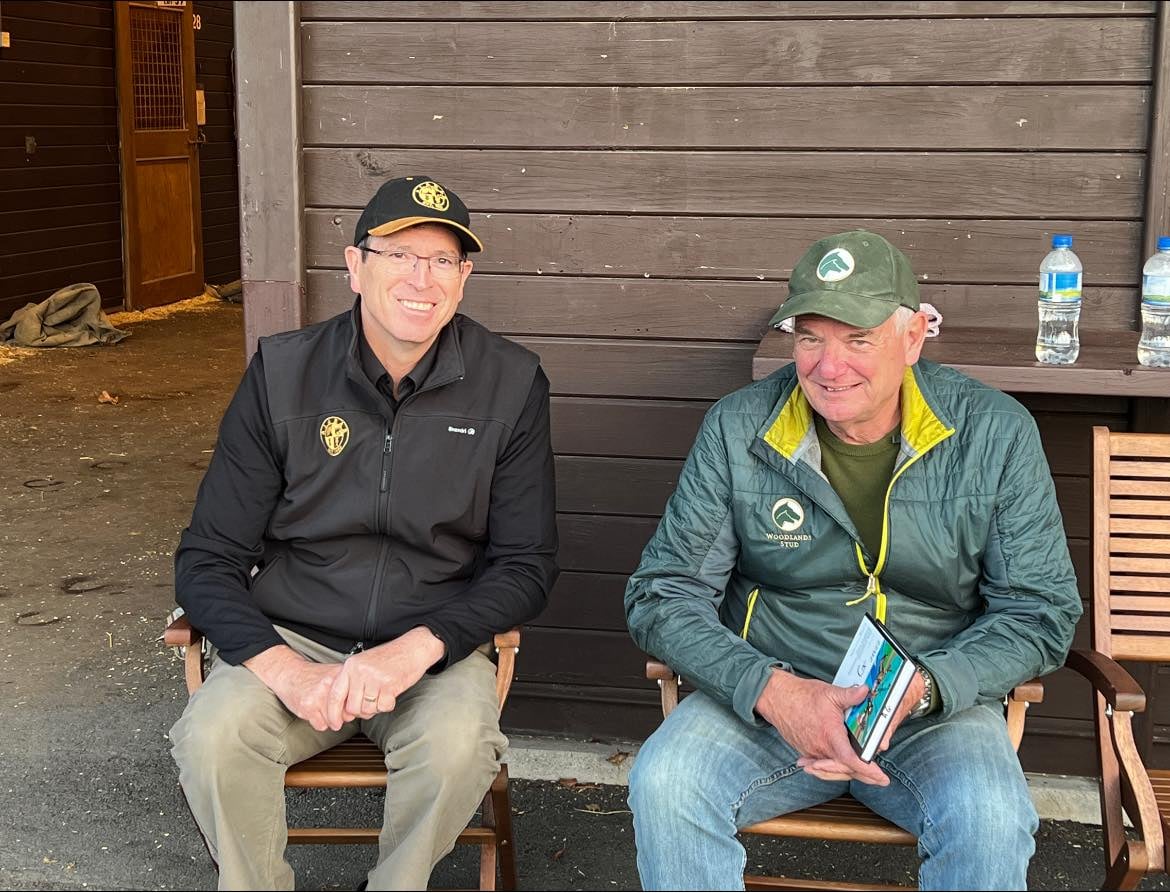Henley takes a step back after a lifetime in the breeding game
Garrick Knight - Raceform • July 11th, 2025 1:00 PM • 7 min read

Last month’s National Standardbred Weanling Sale signalled the end of an era for Alabar Stud.
It was the famed South Auckland nursery’s last hurrah in that space, part of a bigger divestment strategy undertaken by co-owner Graeme Henley.
Henley, a born and bred Southlander, has been involved in the standardbred breeding industry for four decades and at the forefront of it since the turn of the century. But as foal numbers continue to decline and his own odometer goes the other way, he’s decided to overhaul his business model and operate on a much smaller scale.
“Going into this year’s weanling sale, I thought I might still have four or five weanlings next year, prepared by Woodlands Stud,” he told RaceForm. “But after this year’s sale, I have decided that no, I will focus on a smaller number of mares and breeding for the yearling sales instead.”
Alabar and Woodlands have collectively underpinned the weanling sale for the past decade or so, usually holding 95 percent of the draft between themselves. But the sale of Alabar’s lavish Waiau Pa property has expedited things to the point that offering 50 weanlings was no longer possible.
All the stallions are gone – they now stand at the sister farm in Victoria – and Henley has sold a large chunk of his mares out of necessity.
“We sold the property five years ago and did really well out of that, but it costs $1.6 million a year to keep it running and we’ve been doing that at a loss. So, when the five-year renewal on the lease with the new owners came up last year, I let it go. We are moving off farm and the focus has been about cutting back our costs.”
For a long time, Alabar was the biggest base for mares in the North Island as part of a wider business model that included standing stallions and breeding weanlings to sell. But the massive dwindling of breeding numbers – especially the small-scale or hobbyists – has seen the need for such services become almost obsolete.
For context, when Alabar New Zealand was formed in 2000, 4879 mares were bred in this country. In the 2023-24 season, that had fallen to just 1847, a large majority of those from strictly commercial operations.
It’s not a problem limited to standardbreds or New Zealand, but it’s required decisive action from Henley.
“When we started in 2000, we had about 500 outside mares between the two farms, in East Tamaki and Waiau Pa. In the last stud season, we had only 35 outside mares. The reality is the way
the breeding industry has shifted meant the $1.6 million a year it costs to keep this place running is no longer feasible.”
Henley will still be marketing Alabar’s large roster of Australian-based stallions, including Always B Miki, Captain Crunch, Majestic Son and the grand old gentleman of their brand, Art Major. Stallions and Henley have gone hand in hand for the longest time and they’re a huge part of how he made his name.
“The involvement with Art Major has been huge for us; he’s been great for so long and is probably the horse we are most associated with.
“But we stood Presidential Ball, In The Pocket and Mach Three, who was another amazing horse for us but unfortunately died prematurely in a paddock accident.
“In about 2005, I took over the job – with John Coffey from Alabar Australia – of sourcing new stallions. That meant going to America every year, and all up we probably sourced close to 30 stallions.”
As any studmaster will tell you, not every acquisition comes off as expected, and Henley looks back on one huge deal in 2005 as a “sliding doors moment” for the stud.
“We worked exceptionally hard to get the job done on Elsu and we bought him for a lot of money.”
At the time, the son of Falcon Seelster was New Zealand’s champion pacer and at the top of his game after recent wins in the Auckland Cup, Hunter Cup and Inter Dominions. History will show that Elsu received huge support to start his stallion career, but his drop-off was sharp about seven years into his career after failing to leave a champion of his own. He went from 211 mares served here to just six in the space of five seasons.
“Woodlands Stud were very keen to get Elsu but we won the battle. I was thrilled, because it was the biggest deal I’d ever done and everyone loved Elsu.
“And I suppose I got the most invested in him and worked so hard to make him a success. He was the only horse to that served 300 mares (across Australasia) in each of his first four years at stud. And it began so well with a top horse in Anvils Best Ever in his first crop. Ultimately, the realisation that he was a failure as a stallion is my biggest disappointment.”
Not so much financially, given he served nearly 2000 mares, but ultimately a stallion’s legacy is defined by their produce and not many people can name five good Elsus a decade on. Henley says buying Elsu also cost him the greatest sire of all time.
“The next stallion that became available was Bettor’s Delight, and at that stage Woodlands Stud had saved their money after missing out on Elsu. We had spent our money on Elsu, so couldn’t match their offer.”
History shows Bettor’s Delight has served more than 6000 mares Down Under, often at record service fees, and has changed the entire breeding landscape – and the fortunes of Woodlands Stud.
“It was a sliding doors moment. I often sit here and wonder, had they got Elsu, would the Scuse Me family have ‘made’ Elsu, or would Elsu have ‘ended’ the Scuse Me family? We’ll never know.”
After 40 breeding seasons, endless travel and negotiations, and many years of services on the Sires Stakes Board and Breeding Associations, Henley says he’s earned the right to take a step back and enjoy life a little more.
“I’ll keep promoting the stallions exactly as we do now. But after 40 years, there’s been a lot of stress and I think it’s time Suzanne and I do some of the things we always wanted to, while we still can.”
He says he holds optimism for some parts of the industry – specifically Entain’s involvement – but he says there can be no sugarcoating the state of the breeding industry as it stands.
“There’s being optimistic and then there is being realistic. The breeding industry has changed a heap in recent years and it’s now very small – almost at a tipping point. We might only get 750 pacing foals this spring, and that does not correlate with the amount of racing we have, so it’s going to be a major issue going forward.
“There have been a lot of positive changes recently on the racing side of it and Entain have done a great job with that, but that has not filtered through to the breeding side. And that’s what really, really worries me.”
